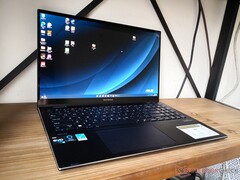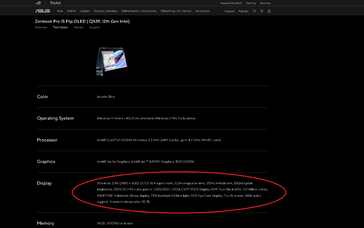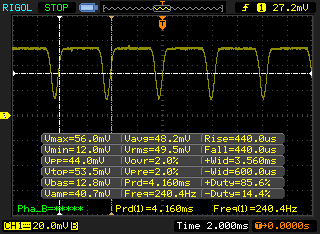(June 27, 2022 update: The issue has been solved. In order to reach 550 nits, both HDR must be enabled through Windows and the content in question must support HDR. Otherwise, the maximum brightness of the display will be limited to 350 nits in every other situation. we're able to record a maximum of 568 nits when playing the HDR test pattern on Youtube.
The higher brightness is excellent for videos that support it, but the fact that it is limited to HDR playback means any SDR content will not benefit from the higher brightness levels of the panel. Most browsing, emailing, or word processing workloads, for example, will be limited to 350 nits even when outdoors where the extra brightness could have come in handy. The original article is below.)
We recently reviewed the Asus Zenbook Flip 15 Q539ZD notable for its Intel Arc A370M GPU and 15.6-inch 2880 x 1620 resolution OLED touchscreen. It's one of the first laptops to pair Intel's new discrete graphics with such a panel. The Asus specifications for the panel read like a dream including the fast 0.2 ms response time, 550 nits at peak brightness, 120 Hz refresh rate, and 100 percent DCI-P3 color coverage whereas most other OLED panels are limited to 60 Hz only.
Unfortunately on our review unit, the maximum brightness of the display is significantly lower than what Asus is claiming as we are only able to measure a maximum of 340 to 350 nits. Disabling automatic brightness control would make no difference and there appears to be no special setting in the BIOS. Asus does offer additional display settings related to OLED care and HDR, but toggling these settings via the MyAsus software would fail to increase the maximum brightness over what we were already recording.
What's strange is that we're also recording a pulse-width modulation of 240 Hz even when our display brightness is set to 100 percent. Since LED-based displays would typically exhibit no PWM when set to maximum brightness, this suggests that our panel should indeed be brighter than 340 or 350 nits and that there may be an artificial ceiling in place.
We can at least confirm the 120 Hz refresh rate, full DCI-P3 coverage, and ultra-fast black-white and gray-gray response times. It's one of the best OLED panels we've seen on a laptop even after taking into account the brightness discrepancy.
The 300 to 400 nit range is common amongst 15.6-inch convertibles like the HP Spectre x360 15 or Samsung Galaxy Book Pro 360 15. Thus, we were excited to see a potential 550-nit display on the Zenbook Flip 15 Q539ZD for even better outdoor viewability. If you were planning on getting the Asus model specifically for its brightness, then you may want to hold off until we hear from the manufacturer. This page will be updated should we learn any new information.
| |||||||||||||||||||||||||
Brightness Distribution: 97 %
Center on Battery: 340.1 cd/m²
Contrast: ∞:1 (Black: 0 cd/m²)
ΔE ColorChecker Calman: 2.47 | ∀{0.5-29.43 Ø4.78}
ΔE Greyscale Calman: 1.8 | ∀{0.09-98 Ø5}
97.5% AdobeRGB 1998 (Argyll 3D)
100% sRGB (Argyll 3D)
99.8% Display P3 (Argyll 3D)
Gamma: 2.2
CCT: 6346 K

















